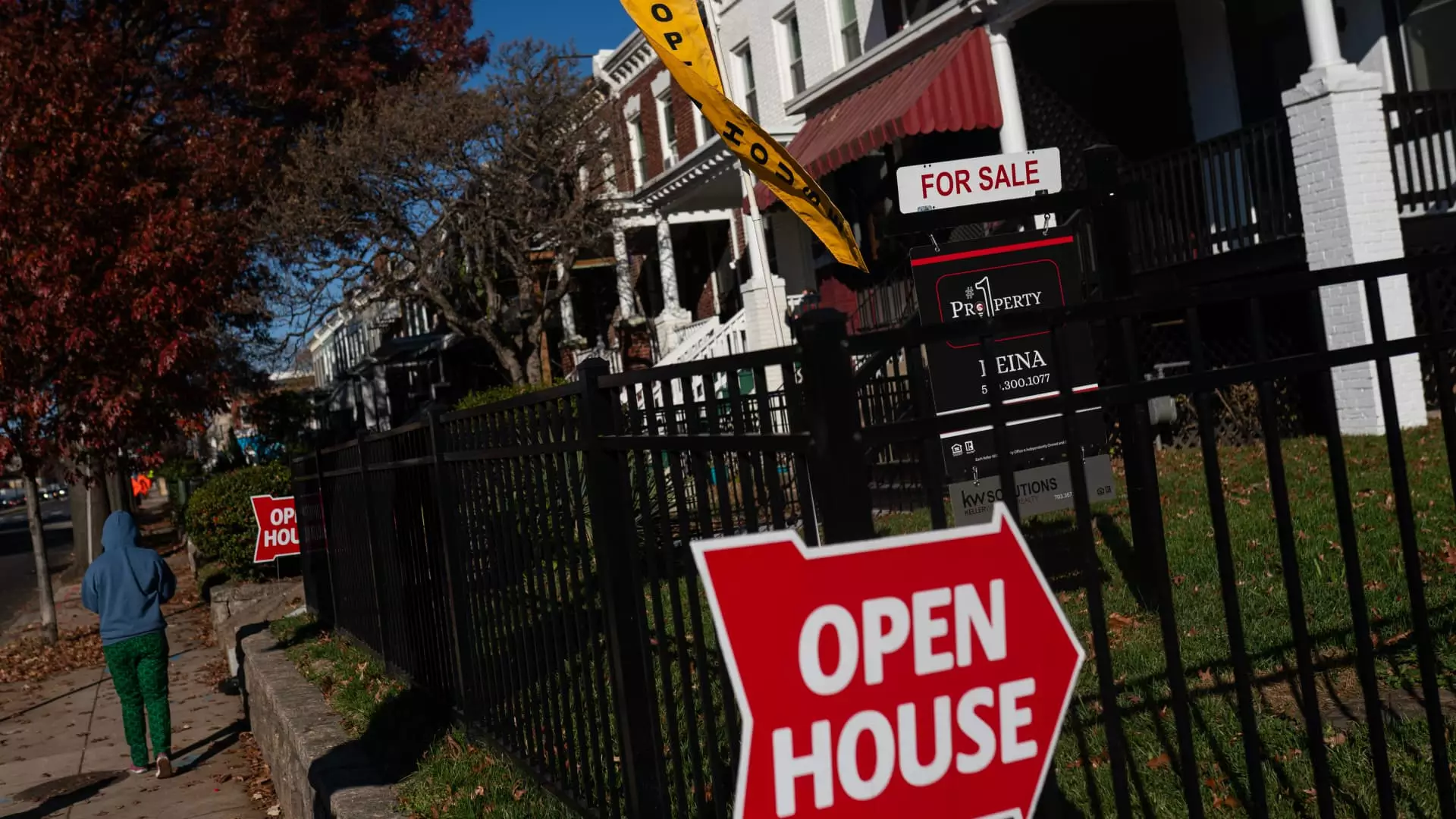A recent report from the Mortgage Bankers Association highlights a concerning trend: a significant decline in mortgage demand, with applications plummeting by 6.2% in just one week. This drop warrants a critical look beyond the numbers, delving into what it signifies for consumers and the real estate market at large. The evident culprits—escalating mortgage rates and climbing economic uncertainty—reflect deeper issues within the housing landscape that cannot be ignored. With the average interest rate on a 30-year fixed mortgage now at 6.72%, up from previous weeks, the reality hits hard: potential homeowners are increasingly feeling the pinch.
The Interest Rate Conundrum
The recent uptick in borrowing costs marks a stark departure from the steady decline experienced over the last few months, which had given buyers fresh hope. With rates that were only 25 basis points lower than the same week last year, even a slight increase feels monumental. The vast majority of homeowners aren’t likely to jump at the chance to refinance, especially when recollections of the record low rates just three years ago linger. This precarious situation emphasizes a troubling trend—many homeowners are trapped in their current mortgages, unable to leverage potential benefits from refinancing.
The Ahistorical Context of Rising Rates
Just a decade ago, fears about economic stability were a familiar refrain, but the current scenario feels different. The Federal Reserve’s latest announcements could either stabilize or further unsettle the market. Investors and consumers alike eagerly await insights from the Fed, hopeful yet apprehensive about its potential impact on mortgage rates. This volatile climate puts a spotlight on how macroeconomic factors can shape individual financial decisions, leading to a compromised housing market where fewer are willing to take the plunge.
The Fluctuating Home Purchase Applications
Interestingly, while refinance applications took a notable hit of 13%, home purchase applications experienced only a negligible uptick of 0.1%. This statistic, though seemingly promising at first glance, draws attention to a much larger issue—they lag significantly behind economic realities. The marginal gain in purchase applications, aided mainly by a rise in FHA loans, indicates that while potential homebuyers are interested, the prevailing conditions cast a long shadow of doubt and hesitation.
Right now, growing inventory and stabilizing mortgage rates are providing a glimmer of hope, but we must ask ourselves: is this sustainable? Striking the right balance in a resource-scarce environment is challenging, to say the least. Amidst this unpredictability, one must wonder how long buyers will sit on the sidelines, watching an increasingly tumultuous market unfold.
Looking Forward: The Uncertain Path Ahead
As we navigate this complex environment, it is crucial to remain vigilant about economic indicators that can tilt the scales of housing demand. The housing market’s health depends not only on mortgage rates but also on consumer sentiment and broader economic performance. The escalating uncertainty about potential Federal Reserve actions leaves a significant cloud lingering over homebuyers and investors alike. Balancing the scales of affordability and market stability is essential if we are to emerge from this cycle of hesitation and reclaim the confidence that drives homebuying and overall economic growth.


Leave a Reply